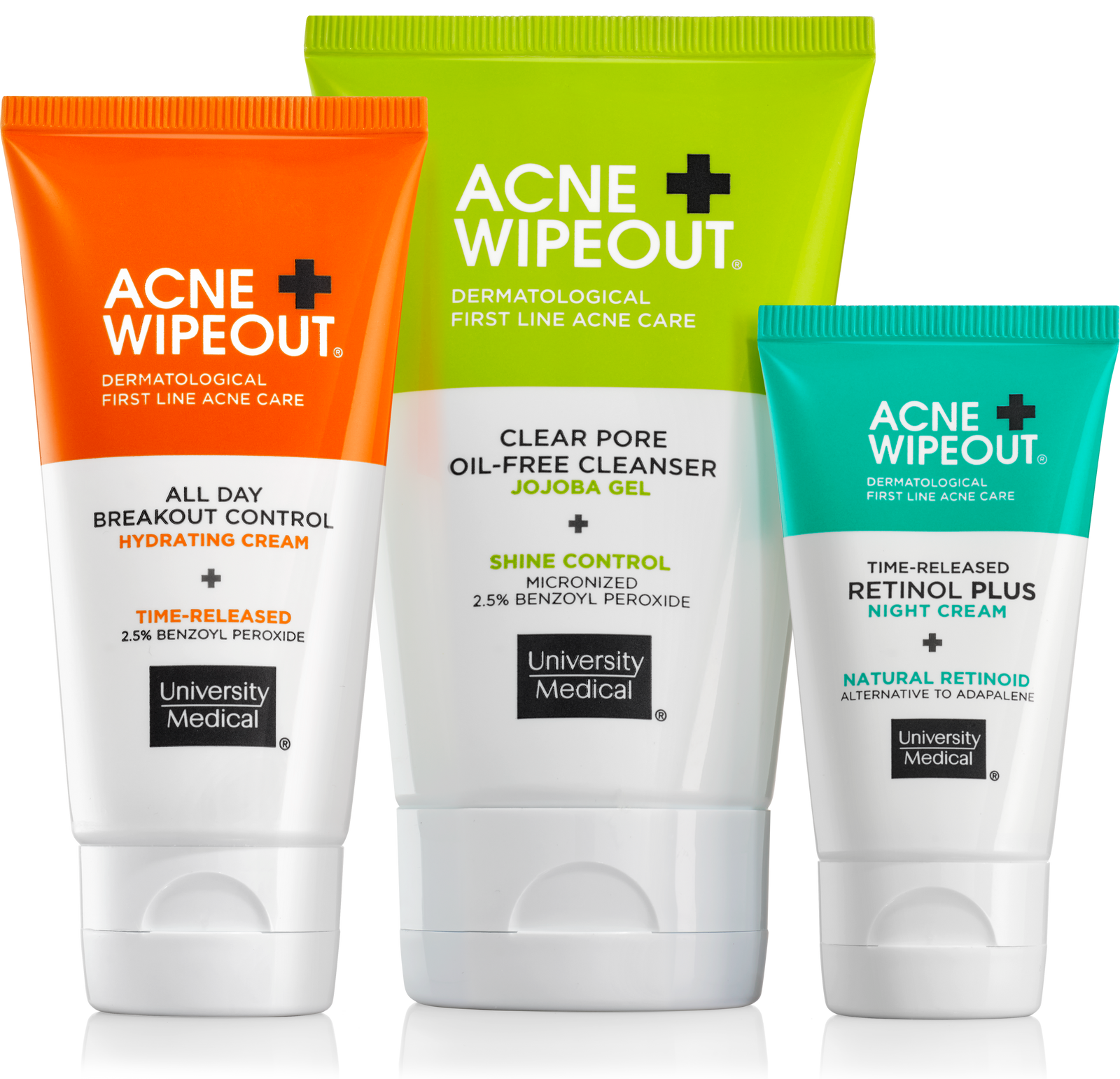Your Cart is Empty
FREE SHIPPING on orders over $25!
FREE SHIPPING on orders over $25!
FREE SHIPPING on orders over $25!
How did Acne Wipeout work for you? We’d like to know.
How did Acne Wipeout work for you? We’d like to know.
Share Your Story
MAINTAINING HEALTHY SKIN

SKIN DEEP BLOG
THE BASIC FIVE
-According to the American Academy of Dermatology, just like fingerprints are unique to each individual person, so too is our skin.
-There are five basic skin types—normal, dry, oily, combination, and sensitive—which can all suffer from acne : (
-These types are essentially based on how much sebum (oil) our skin produces and how well our skin keeps itself hydrated.
-Besides skin types, our skin quality is tied to our overall health, nutrition, exercise, and stress.
-Skin types can change over time. All skin typically gets dryer as it ages.
SIMPLE TEST FOR SKIN TYPE
Cleanse and gently dry your face. Wait 20 minutes, then press sheets of facial oil-blotting paper on your forehead, nose, chin, cheeks and jawline.
Oily skin - the paper will pick up oil or stick to all areas
Dry skin - the paper does not stick to any areas
Normal or Combination skin -the paper only sticks to your chin, nose and forehead
NORMAL
- Few or no blemishes and nearly invisible pores. No dryness, red or oily patches.
OILY SKIN
- Enlarged pores, shiny skin, whiteheads, and blackheads.
DRY SKIN
-More visible pores, red patches, dullness and less elasticity.
-Causes include;
Genetics
Weather
Hormones
Indoor heating
Medications
-More women experience dry skin than men.
-Skin moisture depends on the level of water in the deeper skin layers.
-Skin is constantly losing water via perspiration.
-Skin naturally diffuses about half a liter of water per day.
COMBINATION SKIN
-Some areas of the face are dry while others are oily. Typically, the T-zone is oily (nose, chin and forehead)
-Most people have combination skin
-Prone to enlarged pores, whiteheads, blackheads, and shine.
SENSITIVE SKIN
-Skin reacts to certain skincare fragrances or ingredients with irritation, including redness, burning, stinging, and peeling.
-Start any new treatment or skincare product slowly. Before applying to your face, try a patch test on your inner arm and see how your skin responds.
WHAT IF I’M STILL NOT SURE OF MY SKIN TYPE?
Most people have combination skin—but often misdiagnose themselves.
It’s common to think your skin is oily, when it’s actually dry but with breakouts.
Red, dry skin brought on by vaping or smoking can be mistaken for sensitive skin.
People can think they have sensitive skin when it’s actually red and photodamaged from not wearing sunscreen.
ALKALINITY AND ACIDITY
-May be as important as the 5 basic skin types
-The younger your skin is, the more acidic it is.
-If it’s too acidic, it’s more susceptible to inflammatory acne breakouts
-If it’s too alkaline, skin can look red and dry.
-Skin becomes more alkaline as we age.
-Genetics, as well as skincare, makeup, how much you sweat, are all factors that affect your skin's pH.
- Normal skin barrier is slightly acidic, which keeps moisture in and bacteria out.
SPOT TEST TO BE SURE
While Acne Wipeout is formulated for all skin types, if you believe you have sensitive skin, start slowly. Before applying to your face, spot test on your inner arm and see how your skin responds. When introducing your skin to any new acne treatment, mild irritation can occur at first—even if you don’t have sensitive skin. If this happens, try reducing use to every three days, or every other day, until your skin is used to the treatments. Move on to using Acne Wipeout daily once you are ready. If you experience redness, itchiness, or irritation that seems excessive, discontinue use. If symptoms persist, consult your physician.
Remember to use sunscreen whenever going outside, all year round!